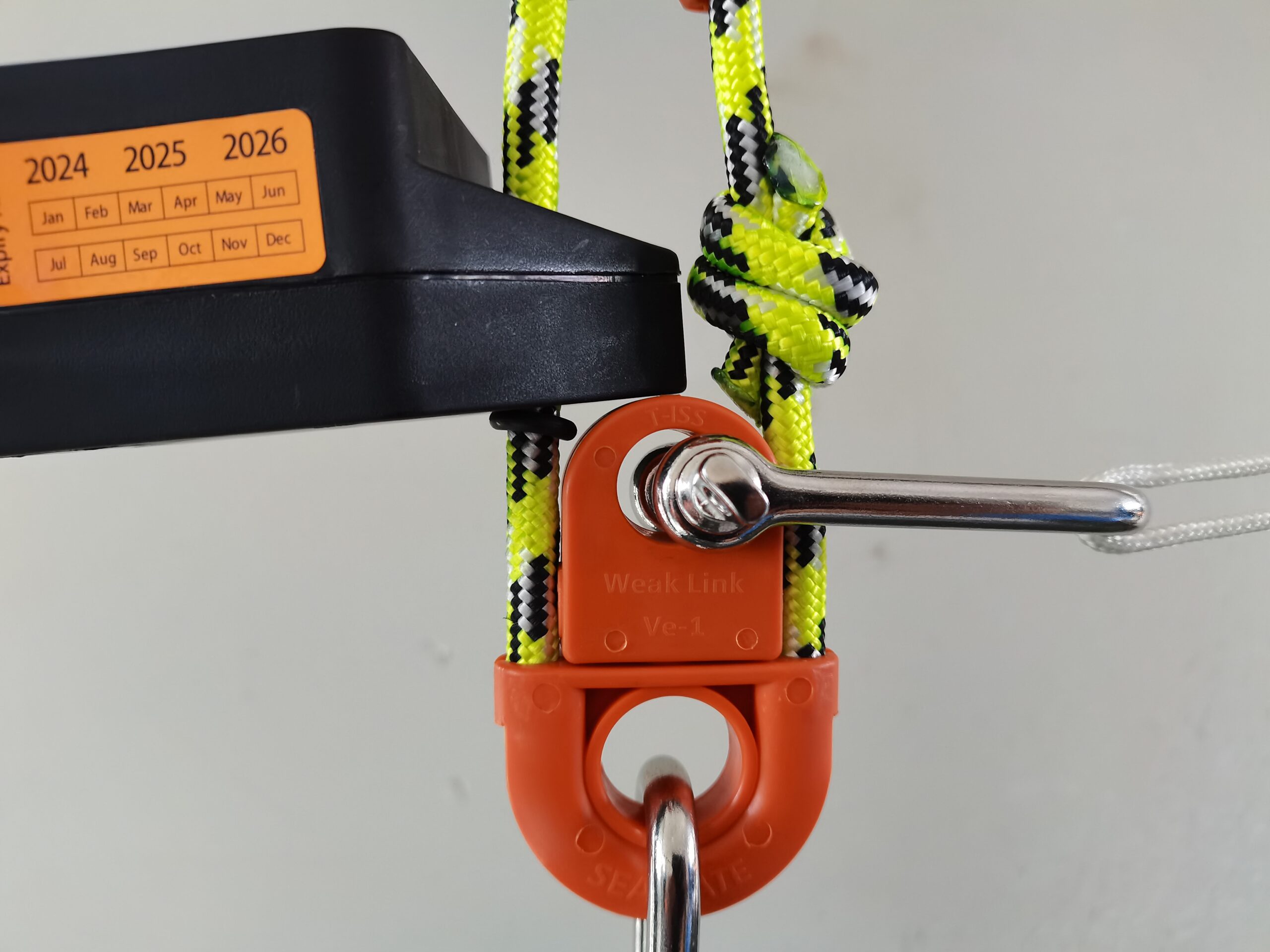Blog Post
The Role of a Hydrostatic Release Mechanism for a Liferaft in Maritime Safety
Posted By: Harsh Bamnolia
Posted On : 30-May-2025

The Role of a Hydrostatic Release Mechanism for a Liferaft in Maritime Safety
A Hydrostatic Release Mechanism for a Liferaft: An Essential Safety Component
A hydrostatic release mechanism for a liferaft is a vital device that ensures the automatic deployment of liferafts in the event of a ship sinking.
Located in an easily accessible area on the deck of a vessel, the mechanism is designed to activate at a certain depth underwater, releasing the liferaft from its cradle so it can float to the surface and inflate.
In emergency situations where crew members may not have the time or capability to launch liferafts manually, this mechanism acts as a failsafe, significantly enhancing survival chances.
The International Maritime Organization (IMO) and SOLAS (Safety of Life at Sea) conventions mandate the use of hydrostatic release units (HRUs) for all commercial vessels.
Understanding their function, maintenance, and regulatory compliance is key to ensuring onboard safety and preparedness for emergency evacuations.
How Does a Hydrostatic Release Mechanism for a Liferaft Work?
The science behind a hydrostatic release mechanism for a liferaft lies in pressure activation. Typically, these units are preset to release the liferaft once the vessel sinks to a depth of around 1.5 to 4 meters. Here's a breakdown of how they function:
Mounting and Securing: The liferaft container is secured in a cradle on the deck with a strap that passes through the hydrostatic release unit.
Automatic Activation: If the ship sinks, water pressure at a certain depth triggers the release mechanism.
Release and Buoyancy: The strap is cut, and the liferaft, aided by its natural buoyancy, rises to the surface.
Inflation: Upon reaching the surface, the liferaft automatically inflates using its gas cylinder.
This seamless process ensures that the liferaft is deployed even without human intervention, proving essential in situations where the ship sinks rapidly or the crew is incapacitated.
Components and Design of a Hydrostatic Release Mechanism for a Liferaft
Understanding the build of a hydrostatic release mechanism for a liferaft helps in better appreciation of its function and maintenance. Key components include:
Hydrostatic Sensor: Detects water pressure and activates the cutter.
Cutting Blade: Slices the securing strap or rope, releasing the liferaft.
Weak Link: A breakable part of the rope that ensures the raft separates completely from the ship if necessary.
Mounting Bracket: Securely holds the liferaft container in place.
Modern units are compact, corrosion-resistant, and made from durable plastic or stainless steel. They are built to withstand marine conditions and require minimal manual operation.
Importance of SOLAS and IMO Compliance
Every hydrostatic release mechanism for a liferaft must be SOLAS-compliant. This means it has passed international safety tests and can perform reliably in real-world emergencies. In addition, these units should:
Be compatible with the vessel's liferaft capacity.
Carry clear instructions and identification.
Be replaced or serviced within 2 years of manufacture or as per manufacturer guidelines.
Maintenance and Testing of a Hydrostatic Release Mechanism for a Liferaft
Regular inspection and maintenance are essential to ensure a hydrostatic release mechanism for a liferaft performs when needed. Here are the standard best practices:
1. Routine Checks
Visual inspection for signs of corrosion or damage.
Check for expired manufacturing or service date.
Ensure the mechanism is properly mounted and not obstructed.
2. Annual Servicing
The HRU must be serviced at an approved service station, especially if the vessel is under a recognized classification society. Service typically includes:
Pressure testing of the hydrostatic sensor.
Blade function verification.
Re-mounting and relabeling.
3. Record-Keeping
Maintain proper logs including date of installation, service records, and replacement schedule. These are mandatory for inspections.
Neglecting proper servicing not only endangers lives but can also lead to detainment of the vessel by maritime authorities.
Benefits of a Hydrostatic Release Mechanism for a Liferaft
Having a hydrostatic release mechanism for a liferaft offers a multitude of safety advantages:
Automatic Operation: Provides assurance of liferaft deployment even if manual action is not possible.
Fast and Reliable: Activates quickly upon reaching preset depth, reducing response time.
Enhanced Safety Compliance: Ensures vessel meets SOLAS and IMO mandates.
Minimal Maintenance: Most units require bi-annual service and withstand tough marine conditions.
Improved Rescue Readiness: Ensures liferaft is available and inflated, increasing survival odds during rescue.
In essence, it is a low-cost, high-impact safety solution with life-saving potential.
Choosing the Right Hydrostatic Release Mechanism from Marinetech
At Marinetech Safety & Shipping Corporation, our range of marine safety products includes high-performance HRUs designed for dependability and ease of use. Our units comply with international standards and are trusted by commercial shipping lines, oil and gas platforms, and offshore vessels.
Key Features of Marinetech’s HRUs:
SOLAS and MED-certified.
Suitable for liferafts of different capacities.
Easy installation with mounting accessories.
Clear labeling with expiry and service dates.
To explore more about our hydrostatic release units and related safety solutions, visit: https://marinetechss.com/supplies/life-raft-and-its-accessories
Conclusion: Prioritize Safety with the Right Hydrostatic Release Mechanism
A clear understanding of a hydrostatic release mechanism for a liferaft can make the difference between life and death during maritime emergencies. By enabling automatic deployment of liferafts, HRUs eliminate the risks of delayed evacuation, thereby protecting lives at sea.
Ensure that your vessel is equipped with a certified HRU and keep it serviced regularly. For reliable, SOLAS-compliant hydrostatic release mechanisms and expert support, trust Marinetech Safety & Shipping Corporation.
Explore our complete range of marine life-saving accessories today: https://marinetechss.com/supplies/life-raft-and-its-accessories